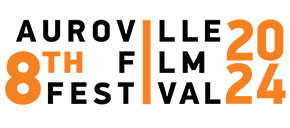Day 4: January 25, 2024
Today was the screening of what I felt was my favourite documentary so far: Aware: Glimpses of Consciousness. The premises were “What is life?”, “What is consciousness?”, “What does it mean to be aware of being aware?” The conversation, the multiple frames-of-reference, the perspectives were of a Mayan healer from Chiapas, Mexico; a plant expert from Sydney, Australia; a neuroscientist; A psychedelic assisted therapy researcher from John Hopkins (I actually almost participated with their psilocybin study in Baltimore), and a Buddhist monk.
I felt there was a general tendency to ask questions more than finding solutions, given the nature of consciousness as not only on the fringes and the frontier of science, but the fact that questions arise as problematics to further research in any scientific endeavour. Questions are more compelling than blunt answers, they elicit awe and wonder, as impetus and momentum to continue searching, seeking, and exploration.
The awe and wonder leaps off the bat immediately: how did single cellular organisms evolve into the complexity of all the life we see around us? The Mayan healer says it’s not just human’s that think, but there is an essence in everything you can feel but cannot grasp. Deep. The neuroscientist: to delve into synapses and wonder where consciousness is. In all the grey goo of the brain, where is love? Or anger? Or jealousy?
Consciousness is subjective experience. But what does it mean to be?
In Buddhist science enlightenment is the direct finding of consciousness as pure awareness. The monk says science approaches consciousness from the outward in. But consciousness manifested as internal clarity is the true awareness of it.
To show us that plants also have consciousness, the plant scientist uses a Pavlovian method. Instead of food and a bell for a dog we have a light and a fan for a plant, and remarkably the outcome is much the same.
This same woman talks of feeling—and dreaming—of shamanic guides, the Mayan healer tells us all plants are sacred and some are even teachers.
Now, to go to psychedelic research with psilocybin “magic” mushrooms. “Meditation is a way to consciousness, mushrooms the crash course.” With psilocybin, feelings of transcendence, interconnectedness, even a profound feeling of “home-coming” a “remembering” occurs, even a readiness to face death in cancer patients with a sense of something continuing beyond death. Psychedelics, just like in meditation, shuts down the Default Mode Network—the circuitry of ego and Self—creating a state of mystical consciousness. As the ego and Self dissolve, one becomes fully aware of being aware…like hearing music for the first time or life’s heartbeat.
The documentary then gets deep and heavy—everything is of the same essence—there is a certain panpsychism.
Max Plank the great physicist declared consciousness as fundamental. Which I read as consciousness is irreducible, all things arise in consciousness. Let me elucidate: information from outside, say light waves, hit our sense instruments, here retina, is conveyed through the visual nerve to the occipital lobe where the waves are decoded. Does it truly reveal the world, with quarks and probabilities? Or waves beyond the visual spectrum? That sight and the seen are a common hallucination endemic to human beings, because we all have the same basic neuroanatomy.
And so, we must begin to see consciousness as irreducibly fundamental. Without a consciousness being aware what exists?
It doesn’t matter if you see yourself as a drop in an ocean, or an ocean in a drop.
The talk with Earthling Kaushalya director of “Crater” and Elizabeth Costa director of “Bangla Surf Girls”, was an energetic discussion.
I have talked earlier of the grotesqueness and gruesomeness of “Crater” before. The discussion turned out to deem the protagonist “pathological”. I hope Krishna wouldn’t mind my paraphrasing (and butchering) her comment that the acting was so bad and cliched it worked! Ha! The grandma—who is transgender—was an attempt to signify gender fluidity I found out (You learn something new every day! Ha!) I also gathered something fundamental about the repetition of the images, memories and scenes—to me they were not just imaginary but hallucinatory. Like I said, comforting, discomforting, the film contained a bit of jumping around in a very short span.
The discussion on “Bangla Surf Girls” went the way I thought it would. The girls did carry the banner of freedom through surfing. What was refreshing was that the filmmakers deliberately chose not to make it about solely “coming from poverty in a developing country”.
By Gautam Emani


